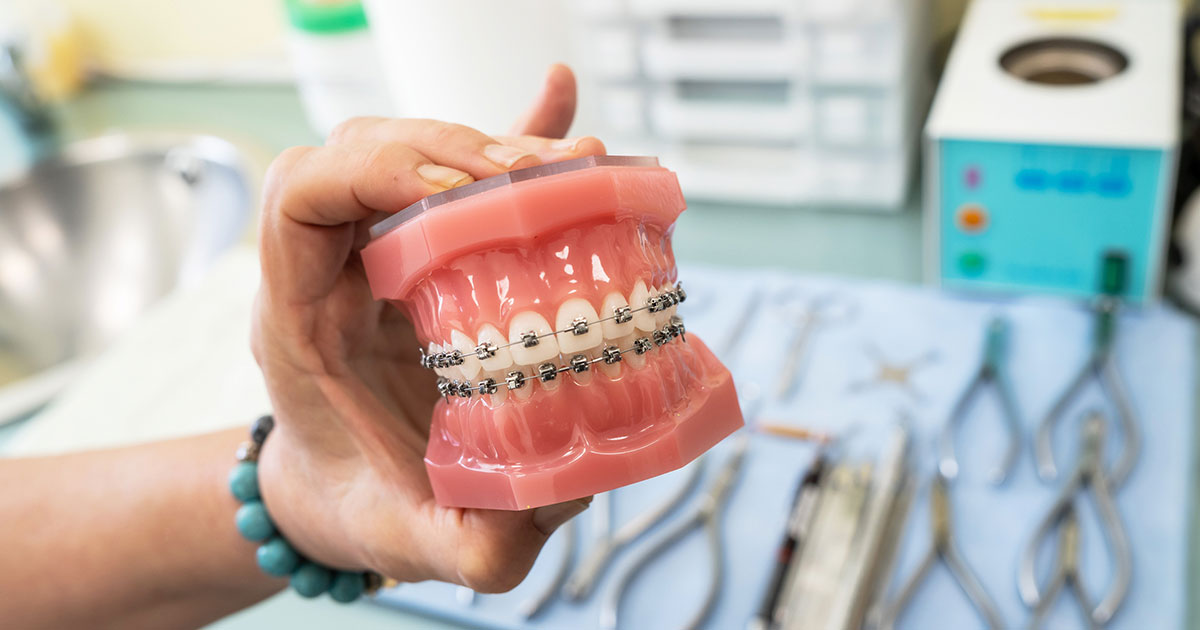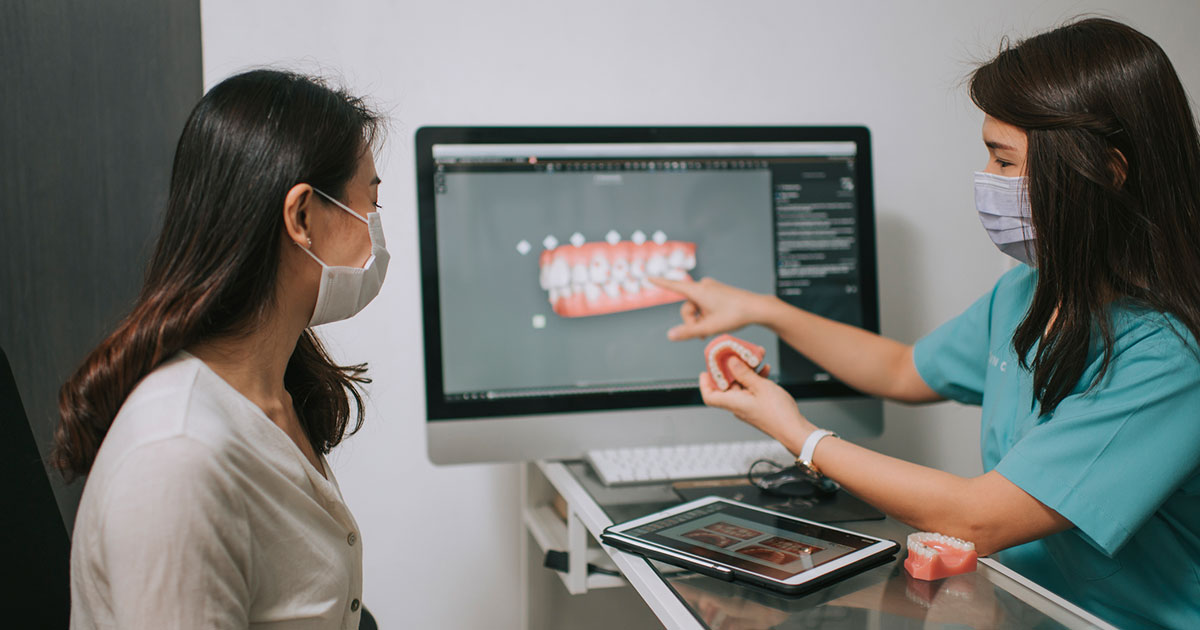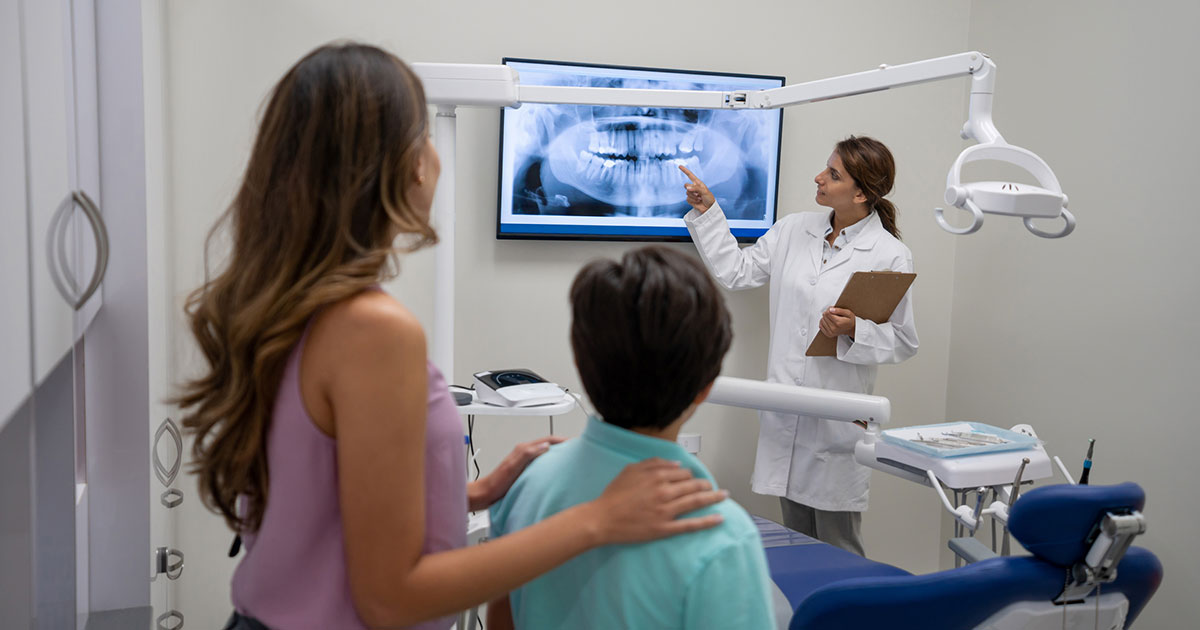Having teeth that are misaligned can affect your self-confidence and make you susceptible to a variety of health concerns that can cause further issues for your dental health. One common misalignment issue is the presence of an underbite. An underbite is a treatable dental condition where the lower jaw protrudes past the upper jaw. Cases can vary in severity, but even mild causes can benefit from quality orthodontic intervention. Underbites can become a health concern when left untreated, but Robison Orthodontics can help. Learn more about underbites and how we can help you address your bite.
What Is an Underbite?
An underbite, also known as a Class III malocclusion, is a misalignment of the jaw that causes the lower teeth to protrude beyond the upper teeth. This “reverse-bite” affects 5% to 10% of people, making it a bit more rare than an overbite, but still not too uncommon. The severity of underbites can range from mild cases where the underbite is barely noticeable and the teeth almost touch to severe cases where the lower jaw extends much further than the upper, preventing the teeth from meeting.
What Causes an Underbite?
There are a variety of causes that can lead to developing an underbite. The two most common causes are genetics and trauma.
Genetics
Genetics is the most common cause of an underbite. You genetically inherit the building blocks that help determine the shape and size of your teeth and jaw. If your family has a history of misaligned or overcrowded teeth, you’ll likely inherit it as well. While underbites caused by genetics can’t be prevented, orthodontic specialists like those at Robison Orthodontics can help.
Injuries
Accidents can often be to blame for an underbite condition. A serious facial injury can cause lasting damage to the jaw. Especially if jaw surgery was necessary, teeth may not align post-surgery. Underbites can also be caused by a tumor, cyst, or abscess that pushes the jaw out of alignment.
Regardless of the cause, there are various forms of treatment that can be used to help realign your teeth without the need for invasive surgery if preventable.
Health Concerns Associated with an Underbite

We often don’t consider just how important our dental health is until we start to experience issues. Dental conditions can severely impact the quality of our lives.
Some of the most common health concerns associated with an underbite include:
- Eating Difficulties – An underbite can interfere with your ability to comfortably chew and swallow. This can cause jaw discomfort.
- Speech Problems – An underbite can cause issues with teeth alignment and tongue positioning, which can impact the ability to speak clearly. With an underbite, developing a lisp is the most common speech issue.
- Pain – Chronic jaw pain, joint pain, headaches and earaches can all be caused by an underbite due to the position of the jaw not only while eating but also at rest. The temporomandibular joint connects the jawbone to the skull, but when you have an underbite, this puts excessive stress on the joint.
- Excessive Tooth Damage – An underbite can cause tooth damage and decay because when you close your mouth, your upper teeth are behind your lower, wearing against one another on a regular basis. The tooth enamel can wear away, and dental care like brushing and flossing can be more difficult.
- Chronic Mouth Breathing – With an underbite, it can feel uncomfortable to keep your mouth shut. This can lead to halitosis and other bacterial infections.
- Sleep Issues – An underbite can lead to snoring, sleep apnea, and other nighttime breathing issues.
- Low Self-Esteem – While a mild underbite may be difficult to detect, a severe condition can alter the appearance of your face. This can lead to a lack of confidence and can prevent you from having quality social interactions.
What Orthodontic Treatments Correct Underbites?

The good news about dental underbites is that there are several treatment options available. Whether your case is mild or severe, a skilled orthodontic professional will be able to assess the dental condition and recommend the best treatment for yourself or your child. Which option works best will depend on a variety of factors, such as the extent of the underbite and the age of the patient. When considering underbite treatment for your child, starting early is the best way your orthodontist can manipulate the bones and palate.
Braces
Braces are one of the most common ways to realign your bite. This can be the least expensive, most effective way to fix the dental condition. The length of time needed for the correction to take place will vary depending on personal factors, but most see lasting results after 2-3 years of braces. The great thing about braces is that they are more versatile than ever. You can choose the traditional metal braces or a clear brace option that is almost impossible to detect. Braces are a great option for both children and adults who need teeth realignment.
Reverse-Pull Face Mask
This mask is designed for children around ten and younger before their bones fuse. It resembles braces headgear and is usually made up of two pads. With one on the forehead and one on the chin, they’re connected by a vertical frame. It wraps around the child’s head and uses metal bands fastened to the upper back teeth. This design gently pulls up the upper jaw so that it aligns with the lower. This can be a highly effective treatment option when worn as frequently as possible, especially when sleeping and at home.
Upper Jaw Expander
This treatment option works by using a wire-frame device tailored by your orthodontist to fit across your palate. At night, you’ll use a special key to widen the expander by a small amount. Over time, this makes the top jaw get wider so that the lower teeth don't touch the outside of the upper teeth anymore. Most individuals wear the expander for about a year. It is not uncommon for it to be replaced by a retainer to ensure proper bone growth. This treatment can work for adults and teenagers but is most effective for children whose bones are still forming.
Tooth Extraction
Tooth crowding can cause a number of issues and can often play a factor in developing an underbite. If you have too many lower teeth, having extra teeth extracted can help fix an underbite. This may be a solution in itself, or it could be used in conjunction with other treatment methods, such as braces.
Surgery
Most mild underbite cases can be resolved through treatment options such as braces or expanders. However, more severe cases may require surgery. This is often due to the lower jaw protruding much further than what would be considered normal.
Typical underbite surgeries include:
- Orthognathic Jaw Surgery – This surgery involves moving the lower jawbone to correct the protruding jaw. This type of surgery is typically outpatient depending on the patient, and although complete healing can take 9-12 months, most individuals are able to return to their daily lives within one to three weeks.
- Le Fort III Osteotomy – This surgery moves a person’s entire face forward and is often only performed in the most serious of cases where a person’s face may appear sunk in above the lower jaw. This can drastically improve the functionality of the jaw and teeth and will alter a person’s appearance.
Underbite Prevention
There are a few steps you can take to try to prevent a severe underbite. For parents with young children, this involves having their children visit a dentist early on, especially if they may be genetically predisposed to dental misalignment. Early dental visits help a child become more comfortable with the setting and also allow the doctor to carefully monitor their dental health. While a genetically-caused underbite can’t be fully prevented, regular checkups help ensure a quick diagnosis and less invasive treatment options.
Trauma can be another cause of an underbite, often through a serious blow to the face. Accidents may not be fully preventable, but certain steps can be taken. For example, if you or your child are involved in high-contact sports that could result in an injury to the face, jaw, or teeth, investing in a quality mouthguard can help lessen the impact of a misplaced blow.
Early detection is always best when trying to prevent an underbite from developing or becoming worse. Regular checkups and monitoring allow your medical professional to accurately check any changes that could become concerning.
Underbite Ortho Treatment FAQs

Regardless of severity, most individuals can benefit from underbite orthodontic treatment. Mild underbites can usually be lived with, but as the severity increases, so do the problems associated with this dental condition. These problems can include negatively impacted speech, biting and chewing difficulties, excessive tooth wear, chronic pain, and discomfort of the mouth.
Contact Robison Orthodontics in Gilbert, AZ

Underbites can not only impact your sense of confidence, but they can impact your quality of life. Underbites can lead to a variety of health concerns, impacting your ability to enjoy your meals, speak clearly with friends, and get a good night’s rest. For children, early diagnosis is key to providing the most effective treatment while bones are still malleable. For adults, treatment options are available and can be just as effective.
There is no reason to suffer through life with a condition that is completely treatable. If you have concerns about your or your child’s jaw alignment, the professionals at Robison Orthodontics can help. We specialize in the most advanced orthodontic treatment in Arizona for individuals of all ages.

Dr. Tyler Robison is an alum of Mesa’s Mountain View High School. He graduated from Brigham Young University before being accepted to the “Top Ten-nationally ranked” University of Louisville in Kentucky, where he earned his Doctorate in Dental Medicine and a Master’s Degree in Oral Biology. He graduated with honors in the top ten percent of his class. Dr. Robison continued at the University of the Pacific in San Francisco, where he received a second master’s degree in dental science and his orthodontic certification.


